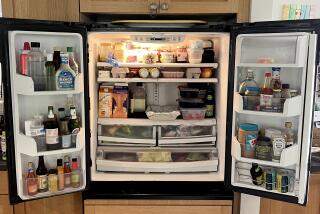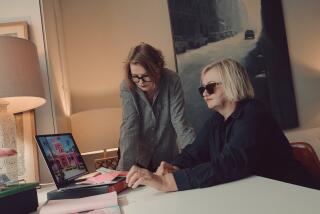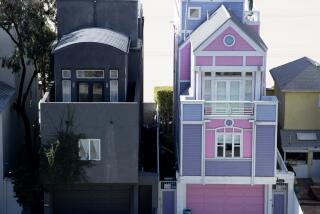Most Homes Lack That Model Look
Why don’t our rooms look like those in the decorating magazines?
For starters, ours exist to be lived in. Not that the rooms we see aren’t real. It’s just that they’ve been, shall we say, enhanced for the photographer.
For example, we don’t see wall outlets and lamp cords--and rarely a bare surface.
Why?
The camera’s eye is more unforgiving than the naked eye. Even a beautiful room photographed as-is would have blemishes little noticed in daily living.
“Because the camera exaggerates empty surfaces, a bare kitchen counter looks like a landing strip in a photograph,” says Donna Warner, editor of Metropolitan Home.
And the everyday things--the toaster and the coffee grinder, the hot pads and hand towels, the salt shaker and the pepper mill--won’t cut the mustard.
“So,” Warner says, “we have to bring in fruits and vegetables to make the kitchen look lived in.”
In other rooms, the furniture usually is rearranged. Choice accessories are brought in for the shoot, as a photo session is called.
“European magazines are more casual about reality,” Carolyn Fleig of Tucson says, “but American magazines do not want to see outlets, plugs or cords.”
Fleig, a graduate of the Parsons School of Design in New York, travels throughout the West to find and then “style” rooms for editorial photography. Among her clients are Hearst Special Publications and Meredith’s Better Homes & Gardens magazines.
Like Mary Poppins’ satchel, Fleig’s capacious carryall includes remedies for many aesthetic ills.
“A screwdriver and scissors are essential,” Fleig says, “along with straight pins and safety pins to pin up drooping slipcovers.”
She carries a loupe and a magnifying glass to study Polaroid prints, which are preliminary to the photo session. She checks the lighting and looks for shadows, reflections or jarring physical imperfections.
A plate rack can hide a wall outlet. And grocery bags and newspapers can be crumpled for filler in the bottom of a large basket of fruit. There’s a variety of tape, including duct tape, which is good for taping electrical cords to furniture backs.
“If a magazine wants a fire in the fireplace, we arrange the logs and then put small balls of paper exactly where we want the flames,” Fleig says. “The paper quickly ignites and produces the effect of a roaring fire, which is nice in hot climates during the summer.”
Unlike Mary Poppins, Fleig needs a car trunk for large vases and platters to satisfy the camera’s need for bigger-than-life objects. She expects the photographer to bring an electric screwdriver to remove a door that might be in the way--a small item compared with a truck full of lighting equipment.
“Homeowners are surprised at how much photographic equipment and how much time are needed,” Fleig says. “It can take eight hours to photograph a kitchen and several days to do a number of rooms in a house.”
With all of the primping, there is less today than there once was. Metropolitan Home used to have three types of shoots. An “A” shoot meant bringing fruit and flowers. “B” meant adding a lot of accessories, such as linens and pillows.
“The ‘C’ shoot was when you brought in the furniture,” Warner says. “Now we have A and B shoots but rarely get to C because of the expense.”
Whether it’s bottom line or otherwise, some magazines today prefer a simpler look.
“Our rule is one type of flower at a time,” says Kelly Reardon-Tagore, editor of Hearst Special Publications.
And don’t feel bad if your rooms aren’t photo material.
“My house doesn’t look like it belongs in a magazine,” Warner says. “You might as well ask why most people don’t look like fashion models.”


